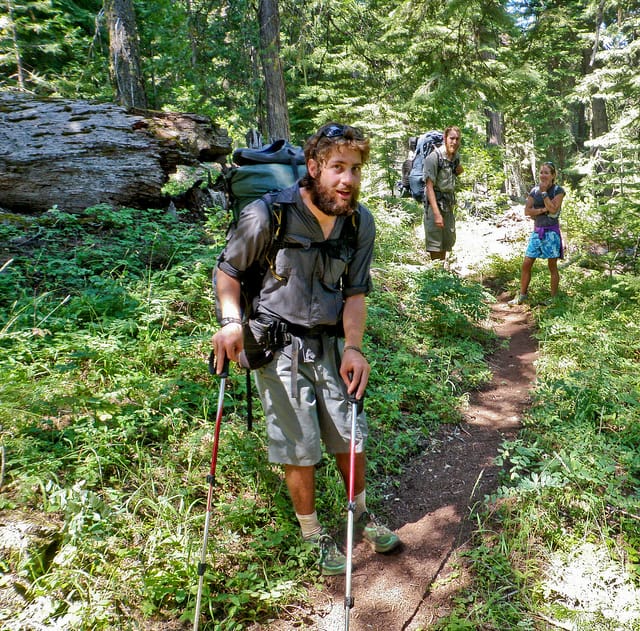What is thru-hiking you ask? The term ‘Thru-hiking’ was made particularly popular in the U.S., most commonly associated with the epic hikes of the Appalachian Trail (AT), the Pacific Crest Trail (PCT) and the Continental Divide Trail (CDT). It is the act of walking an extremely long-distance route in the space of one hiking season. To put ‘extremely long-distance’ into perspective, the AT is 3,500km, the PCT is 4,200km and the CDT is roughly 5,000km. In comparison, the entire length of the Camino Frances stands at 780km while the complete South West Coast Path is 1,014km.
To complete the three aforementioned thru-hikes mean the completion of the Triple Crown of thru-hiking. Hiking even one of these trails can even be too much for one person, and so there are alternate methods. Many people choose to ‘section hike’, which is simply hiking sections of the trail at a time. Flip-flopping is the method of starting at a certain point – the middle, perhaps – and then returning later to complete the part that you skipped.
Why Thru-Hike?
You may wonder as to why anyone would tackle an enormous challenge such as thru-hiking. The answer, more often than not, lies in spirituality and finding oneself. While the trails have no actual spiritual or religious meaning like the Camino, hiking in nature is often seen as an incredibly spiritual experience. People often wish to challenge themselves with this mammoth undertaking in a bid to find out more about their person and to understand more about themselves. While thru-hiking, you remove yourself from the ‘real’ world, immersing yourself in nature and the experience of being alone (thru-hiking alone is the more popular choice).
While the Triple Crown is the ‘Holy Grail’ of thru-hiking, other routes throughout the world can be seen as thru-hikes on a smaller scale. At 6,166km, the Santiero (or Grand Italian Trail) brings you the entire boot-shaped length of Italy. The South West Coastal Path (1,106km), the West Highland Way and the Camino de Santiago can all be hiked with the thru-hiking principles.
The Challenges of Thru-Hiking
Water, Food and Resources
As thru-hiking trails span thousands and thousands of kilometres, you can go days without passing a supply station. You can’t simply go off-trail to find the nearest town or shop, as this will bring you just further into the wilderness. Water, food and shelter are the most important and most basic aspects of thru-hiking which aren’t always readily available.
Water purifies and dehydrated food are commonly used amongst thru-hikers, as they provide the sustenance that is needed while also cutting down on weight. When hiking over 4,000km, the last thing you want is unnecessary weight in your backpack.
Shelter is also incredibly important, in the form of a tent. Given that thru-hikers cross multiple environments, a thru-hiking tent needs to stand up to the harshness of the deserts as well as the freezing of snowy mountain passes.

Physicality
The physicality of such a thru-hike can take its toll on people, with not much being able to prepare the feet for the journey to come. There have been many before and after photos of thru-hikers, with some of the transformations being incredibly dramatic (and not just the scruffy beards).
Old and young alike can complete thru-hikes, and often the pain barrier isn’t physical at all, but mental. You can guarantee that anyone who has completed a thru-hike as been through hell and back, both physical and mentally.

We hope that you enjoyed this guide to What is True-Hiking? If you are interesting in completing one of the long-distance hiking trails in Ireland, Scotland, England, Wales or on the Camino Frances? Check out our range of self-guided tours.




